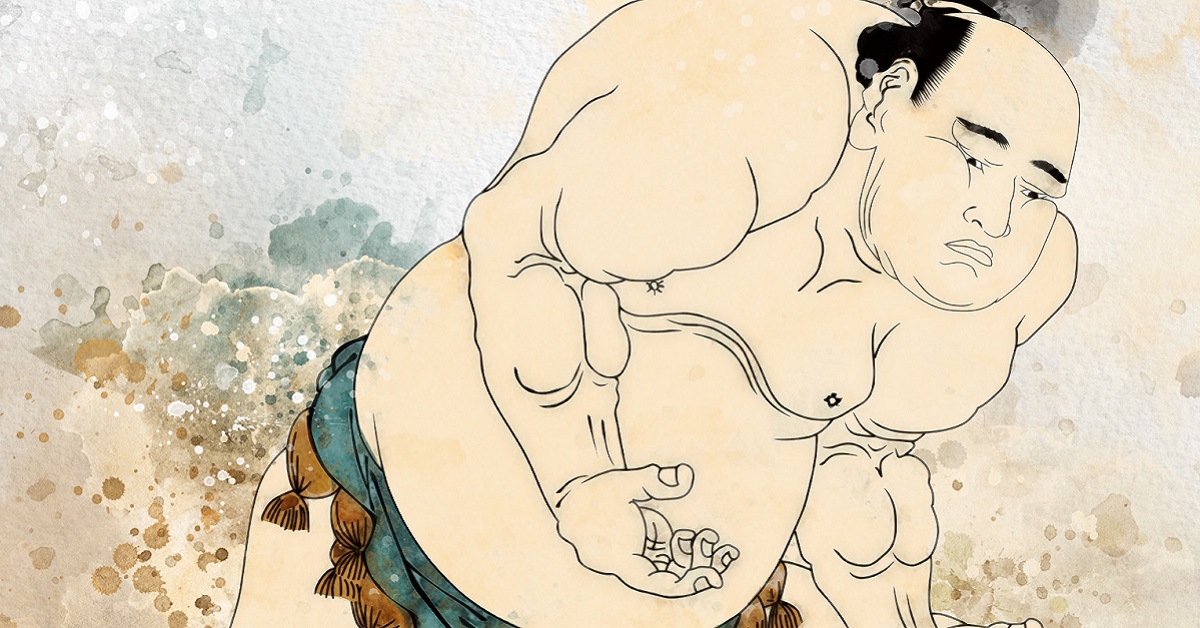Sumo is a traditional Japanese sport where strict rules govern every move on the dohyo. If a mawashi comes loose and results in exposure, the wrestler immediately loses by fujō-make. This article explains the rule and the cultural background behind it in a clear and detailed way.
The Role of the Mawashi in Sumo
The mawashi is indispensable for every wrestler. A single piece of cloth wrapped around the waist becomes the center of offense and defense, serving as a grip to pull or throw the opponent. At the same time, tightening the mawashi helps a wrestler focus mentally and prepare for the challenge of the ring.
The features of the mawashi can be summarized as follows.
| Item | Details |
|---|---|
| Material | Strong fabrics such as cotton or silk |
| Length | Around 7 to 10 meters |
| Width | Around 60 cm |
| Color | Black for wrestlers below the Jūryō rank, colored for higher ranks |
| Role | Basis for techniques, symbol of spirit, part of etiquette |
From these points, it is clear that the mawashi is not just fabric. For the wrestler, it is both a weapon for battle and a sacred symbol of purity in the ring.
The Rules if a Mawashi Comes Off
If a mawashi comes off during a match and the wrestler’s private parts are exposed, it results in an immediate loss by “fujō-make.” This is one of the strictest rules in sumo. Since the ring is sacred, exposure is not tolerated.
The referee’s judgment criteria can be summarized as follows.
| Situation | Decision | Explanation |
|---|---|---|
| Mawashi is only loose | Matta (halt) | Match is temporarily stopped and the mawashi is retied |
| Front pouch comes off and exposure occurs | Fujō-make | Immediate loss |
| Partially loosened but no exposure | Continue | Match continues |
In other words, the most important point is that the moment exposure is confirmed, the wrestler loses immediately.
Why Fujō-make Exists
The rule of fujō-make exists because sumo originated as a ritual for the gods. The dohyo (ring) is considered sacred, and purity must always be maintained. Therefore, exposure is regarded as an “impurity,” and the match cannot continue.
Reasons for fujō-make can be summarized as follows.
| Reason | Explanation |
|---|---|
| Preservation of sacredness | The ring is a divine place, and impurity must be avoided |
| Etiquette and dignity | The wrestler’s attire represents respect and formality |
| Audience consideration | Prevents discomfort for spectators |
Because of these reasons, the handling of a mawashi coming off is extremely strict.
Preparation of the Mawashi by Wrestlers and Assistants
Before a match, a wrestler and several attendants prepare the mawashi. This is not just putting on clothing, but a kind of ritual. The attendants adjust the fit to the wrestler’s body, wrap it several times, and tie it firmly at the back.
The process of putting on a mawashi can be outlined as follows.
| Step | Content |
|---|---|
| 1 | Wrap the mawashi around the body |
| 2 | Tighten firmly |
| 3 | Place the knot at the back |
| 4 | Fold and secure the edges |
| 5 | Final inspection |
Through these careful steps, the risk of the mawashi coming off during a bout is minimized.
Past Cases of Fujō-make
In modern times, fujō-make is almost unheard of. However, in the Edo and Taisho periods, there were cases where a mawashi came undone, leading to a wrestler’s loss. Back then, mawashi were not as strong as today, and they sometimes loosened during heated matches.
The historical trend of fujō-make can be summarized as follows.
| Era | Characteristics | Frequency of Fujō-make |
|---|---|---|
| Edo Period | Weak materials, prone to loosening | Occasional |
| Meiji Period | Improvements underway | Rare |
| Showa and later | Strong materials and techniques | Almost none |
Today, thanks to improved materials and tying methods, fujō-make is extremely rare. However, the existence of the rule itself serves as a deterrent.
The Spiritual Bond Between Wrestler and Mawashi
The mawashi is not just cloth. For wrestlers, it is a symbol of pride and determination. Tightening the mawashi before a match is akin to putting on armor before battle. It mentally prepares them and strengthens their resolve to step onto the dohyo.
The meaning of the mawashi for wrestlers can be summarized as follows.
| Meaning | Content |
|---|---|
| Weapon | Practical tool at the core of offense and defense |
| Spirituality | Symbol that solidifies determination to fight |
| Etiquette | Formal attire suitable for a sacred space |
Thus, the mawashi is deeply tied to a wrestler’s life and identity.
Conclusion
If a mawashi comes off during a sumo match and private parts are exposed, the wrestler immediately loses by fujō-make. The mawashi is both a practical tool for techniques and a sacred garment that protects the purity of the dohyo. Although fujō-make rarely happens today, the existence of this strict rule continues to uphold the spirit of sumo.
For wrestlers, keeping the mawashi secure is not only about avoiding defeat. It is about protecting their pride and dignity.





コメント